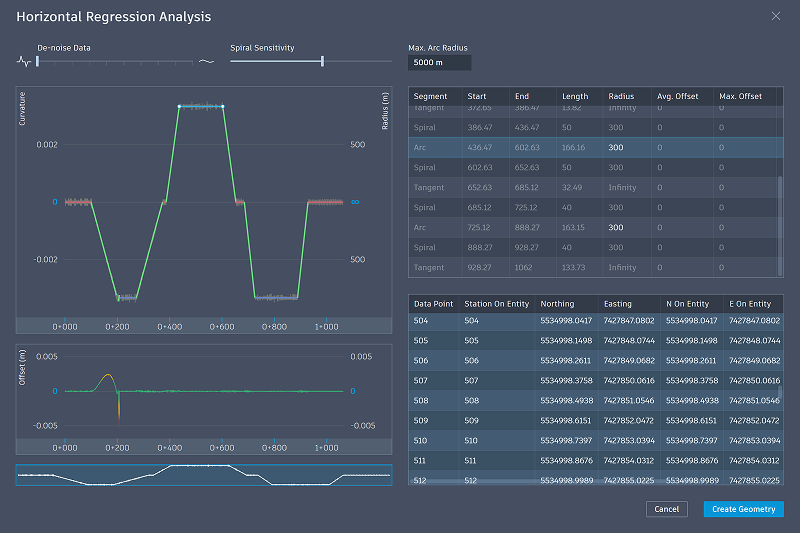Learn about horizontal regression analysis for creating alignments.
New in 2026.2
- Improved readability in the Horizontal Regression Analysis dialog by adding descriptive table titles.
- Improved validation of Alignment names. Unsupported characters are now blocked, ensuring names are saved and displayed correctly. Learn more.
New in 2026.1
Horizontal regression analysis is a powerful technique used to create an optimized alignment for linear infrastructure based on surveyed data of an existing path. Over time, features like railway tracks or roads can shift from their original position, developing imperfections that affect performance and safety. Horizontal regression addresses this by taking measured points along the current path and calculating a new, "best-fit" alignment composed of geometric elements like tangents (straights), circular curves, and transition spirals. The primary goal is to create a smooth, precise alignment that minimizes the deviation, or "slew," from the existing feature's location.
This method is essential for civil engineers, particularly in rail and highway design, for several key reasons. It allows for the accurate recreation of "as-is" geometry when original design plans are lost and is crucial for guiding track maintenance and renewal projects. By smoothing out irregularities, it enhances safety and ride comfort while minimizing wear on infrastructure. Additionally, by creating an alignment that is as close as possible to the current one, it can significantly reduce construction costs during upgrades. This technique of fitting a geometric line to real-world data is a foundational tool for improving the design, safety, and efficiency of linear projects.
Generate alignments with Horizontal Regression Analysis by selecting one or two linear data paths (COGO points, feature lines, or 2D/3D polylines). Using the Horizontal Regression Analysis Vista that then displays a potential solution, you can then adjust thresholds to refine the final alignment data for creation. Learn more.
